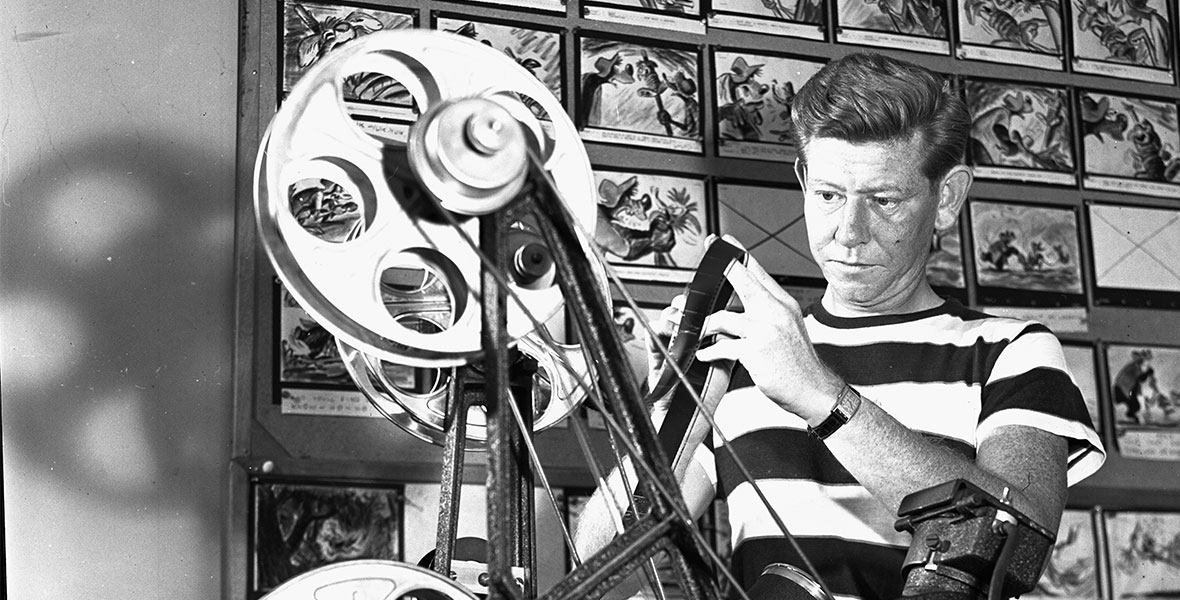Walt Disney first came to rely upon Wilfred Jackson’s genius and sense of perfection in 1928, the year Mickey Mouse was born. It was the age of silent movies, but Walt had a notion to marry music and animation. Newly arrived in the Studio’s animation department, Wilfred devised a method of synchronizing animation with music by using a metronome that could then be converted to a music track. The innovation, which was featured in Mickey Mouse’s debut film Steamboat Willie, revolutionized the entertainment medium and competing studios spent more than a year trying to figure out Disney’s production “secret.”
Walt quickly promoted “Jaxon,” as he was called, from animator to director.
As Frank Thomas and Ollie Johnston wrote in their book Disney Animation: The Illusion of Life, “Jaxon was easily the most creative of the directors, but he was also the most ‘picky’ and took a lot of kidding about his thoroughness.”
Born in Chicago on January 24, 1906, Jaxon enrolled at Otis Art Institute in Los Angeles in 1925. Three years later, just before Charlie Mintz stole Walt’s Oswald the Lucky Rabbit character, Jaxon began hanging around The Walt Disney Studios. It was a poor time to ask for a job, but he volunteered to wash cels and assist animators; one day, he found himself holding a paycheck. He later said, “I’m the only guy [at Disney] who was never hired.”
He quickly moved up the ranks to animator, contributing to the Silly Symphony shorts. After Steamboat Willie, Jaxon went on to direct 35 shorts, three of which won Academy Awards®: The Tortoise and the Hare, The Country Cousin, and The Old Mill. Probably the greatest example of his skill in synching action to music was The Band Concert, starring Mickey Mouse.
Jaxon also applied his talent to 11 animated features including Snow White and the Seven Dwarfs, Pinocchio, Dumbo, Saludos Amigos, Melody Time, Cinderella, Alice in Wonderland, Peter Pan, and Lady and the Tramp. He directed such memorable sequences as “Night on Bald Mountain” in Fantasia, and all cartoon and combination live-action footage in Song of the South. During the war years, he also produced and directed government films for the United States Navy.
In 1954, as Walt entered the new medium of television, he asked Jaxon to produce and direct animated shows for the Disneyland series. During the next four years he directed 13 shows, including “The Story of the Animated Drawing.” After nearly 35 years with The Walt Disney Studios, he retired in 1961.
Wilfred Jackson passed away on August 7, 1988, in Newport Beach, California.



